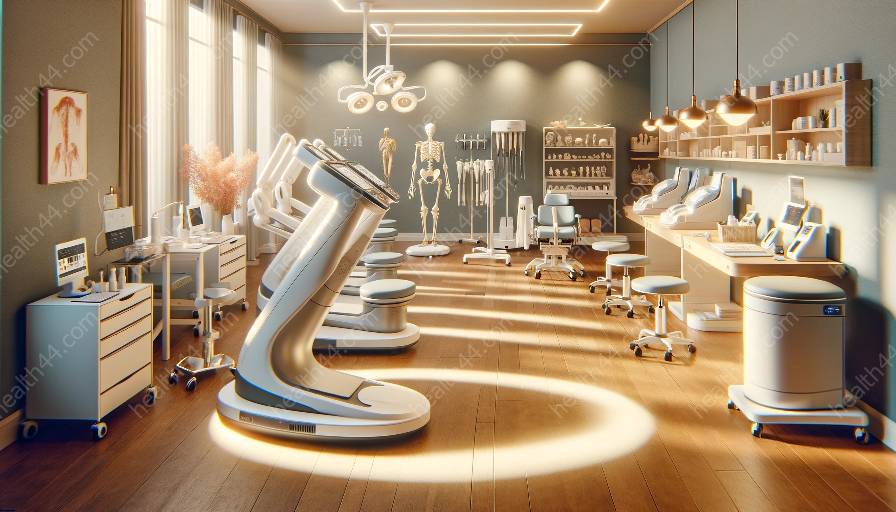Prosthetics represent one of the most significant advancements in healthcare, offering life-changing solutions for individuals with limb loss or limb differences. From artificial limbs to orthopedic equipment and medical devices, the field of prosthetics encompasses a wide range of technologies and innovations that have revolutionized the way we think about physical rehabilitation, mobility, and quality of life.
The Evolution of Prosthetics
The history of prosthetics dates back to ancient civilizations, where primitive forms of prosthetic limbs were crafted to provide amputees with basic functionality. Over the centuries, advancements in materials, engineering, and medical knowledge have propelled prosthetics into the modern era, transforming them into sophisticated, lifelike extensions of the human body.
Today, prosthetic devices are designed with a focus on not only restoring lost function but also enhancing comfort, mobility, and aesthetic appeal for the wearer. Cutting-edge materials such as carbon fiber, advanced plastics, and 3D printing technologies have revolutionized the manufacturing processes, enabling prosthetists to create custom-made solutions tailored to each individual's unique needs.
Technological Innovations in Prosthetics
The intersection of prosthetics with orthopedic equipment and medical devices has led to a wave of technological innovations that continue to shape the field. From robotic exoskeletons that assist with mobility to advanced myoelectric prosthetic limbs that respond to muscle signals, the integration of electronics, sensors, and microprocessors has opened up new frontiers in prosthetic design.
Additionally, the use of 3D scanning and modeling technologies has revolutionized the process of creating custom-fitted prosthetic devices, allowing for greater accuracy and personalization. This synergy between prosthetics, orthopedic equipment, and medical devices has resulted in more intuitive, functional, and user-friendly solutions for individuals seeking to regain independence after limb loss.
Orthopedic Equipment and Prosthetic Care
Orthopedic equipment plays a crucial role in the delivery of prosthetic care, encompassing a range of supportive devices such as braces, splints, and assistive tools that aid in the rehabilitation and mobility of individuals with musculoskeletal conditions. Collaborative efforts between orthopedic specialists and prosthetists ensure that patients receive comprehensive care that addresses both their prosthetic needs and the management of underlying orthopedic conditions.
Furthermore, advancements in orthopedic equipment have led to the development of specialized components that complement prosthetic devices, such as shock-absorbing sockets, adjustable suspension systems, and adaptive interfaces that improve the comfort and performance of prosthetic limbs. The seamless integration of orthopedic equipment with prosthetic solutions underscores the holistic approach to enhancing the overall well-being of individuals requiring orthotic and prosthetic care.
Medical Devices & Prosthetic Rehabilitation
Medical devices play a pivotal role in the field of prosthetic rehabilitation, supporting the assessment, fitting, and ongoing management of prosthetic devices. From cutting-edge diagnostic tools for evaluating residual limb characteristics to wearable sensors that provide real-time feedback on gait and movement patterns, medical devices have revolutionized the precision and personalized nature of prosthetic care.
Advancements in imaging technologies, such as magnetic resonance imaging (MRI) and computerized tomography (CT), have facilitated the detailed visualization of anatomical structures, enabling prosthetists and orthopedic specialists to tailor prosthetic solutions with unparalleled accuracy. Moreover, the integration of remote monitoring technologies and telehealth applications has expanded access to prosthetic rehabilitation services, empowering individuals to receive timely support and guidance regardless of their geographical location.
The Future of Prosthetics and Healthcare
As prosthetics, orthopedic equipment, and medical devices continue to intersect and advance, the future holds immense promise for further improving the lives of individuals with limb loss and orthopedic conditions. Emerging technologies such as brain-computer interfaces, regenerative tissue engineering, and neuroprosthetics are poised to redefine the possibilities of functional restoration, mobility, and sensory feedback, ushering in a new era of personalized, bio-integrated prosthetic solutions.
By harnessing the collective potential of prosthetics, orthopedic equipment, and medical devices, healthcare providers, engineers, and researchers are committed to pushing the boundaries of innovation, fostering inclusivity, and empowering individuals to live life to the fullest, irrespective of physical limitations.


